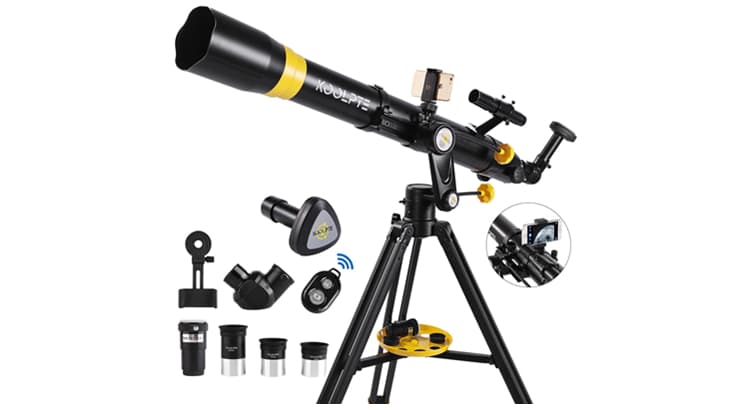As humanity gazes towards the stars, the tools we deploy to explore the cosmos are as diverse as the celestial wonders themselves.
Telescopes stand at the forefront of our cosmic quest, each type offering a unique lens into the mysteries of the universe.
In this exploration, we navigate the astronomical landscape to uncover the different types of telescopes that astronomers employ in their pursuit of understanding the cosmos.
Refracting the Light
The classic refracting telescope employs lenses to gather and focus light. With a design reminiscent of the iconic telescope of Galileo, refractors are celebrated for their simplicity and clarity.
They remain a popular choice for amateur astronomers and are well-suited for observing planets, stars, and the moon.
Reflecting the Brilliance
Breaking away from lenses, reflecting telescopes utilize mirrors to gather and reflect light. Invented by Sir Isaac Newton, these telescopes eliminate chromatic aberration and are renowned for their versatility.
Reflectors excel in observing faint celestial objects and are commonly used in both amateur and professional observatories.
Catadioptric Marvels
Combining the strengths of lenses and mirrors, catadioptric telescopes merge refracting and reflecting elements.
Popular designs include the Schmidt-Cassegrain and Maksutov-Cassegrain telescopes. Renowned for their compact size and versatility, catadioptrics are favored for astrophotography and observations of deep-sky objects.
Radio Waves in Focus
Venturing beyond the visible spectrum, radio telescopes capture radio waves emitted by celestial objects. With massive parabolic dishes, these telescopes detect radio frequencies and unveil phenomena such as pulsars, quasars, and cosmic microwave background radiation. Iconic examples include the Arecibo Observatory.
Chasing the Infrared Glow
Infrared telescopes pierce through cosmic dust clouds to reveal celestial objects emitting infrared radiation. Observing in the infrared spectrum enables astronomers to study cool stars, planetary atmospheres, and regions of star formation.
The Spitzer Space Telescope is a notable infrared pioneer.
Peering into the X-ray Universe
X-ray telescopes, like NASA’s Chandra X-ray Observatory, are essential for studying high-energy phenomena such as black holes, supernovae, and hot gas clusters.
These telescopes use grazing-incidence mirrors to focus X-rays onto detectors, providing a unique perspective on the violent cosmic processes.
Embracing the Ultraviolet Horizon
Ultraviolet telescopes, such as the Hubble Space Telescope, venture into the ultraviolet spectrum, capturing the brilliance of hot, young stars and unveiling details obscured by Earth’s atmosphere.
Their observations contribute to our understanding of stellar evolution and the dynamics of galaxies.
Gamma-Ray Visionaries
Gamma-ray telescopes, like the Fermi Gamma-ray Space Telescope, explore the highest-energy realm of the electromagnetic spectrum.
By detecting gamma-ray bursts and sources of high-energy radiation, these telescopes contribute to our understanding of cosmic explosions and extreme astrophysical processes.
Conclusion
In conclusion, the different types of telescopes form a celestial mosaic, each contributing a unique perspective to our understanding of the universe.
Whether it’s the timeless elegance of refractors, the versatility of reflectors, or the cutting-edge technology of space-based observatories, telescopes continue to be our windows to the cosmic wonders that lie beyond.
As technology advances, new frontiers in observational astronomy emerge, and the synergy of these diverse telescopic instruments propels our cosmic exploration into uncharted realms.
The universe awaits, and through these varied lenses, we continue to unravel its mysteries, one celestial observation at a time.





